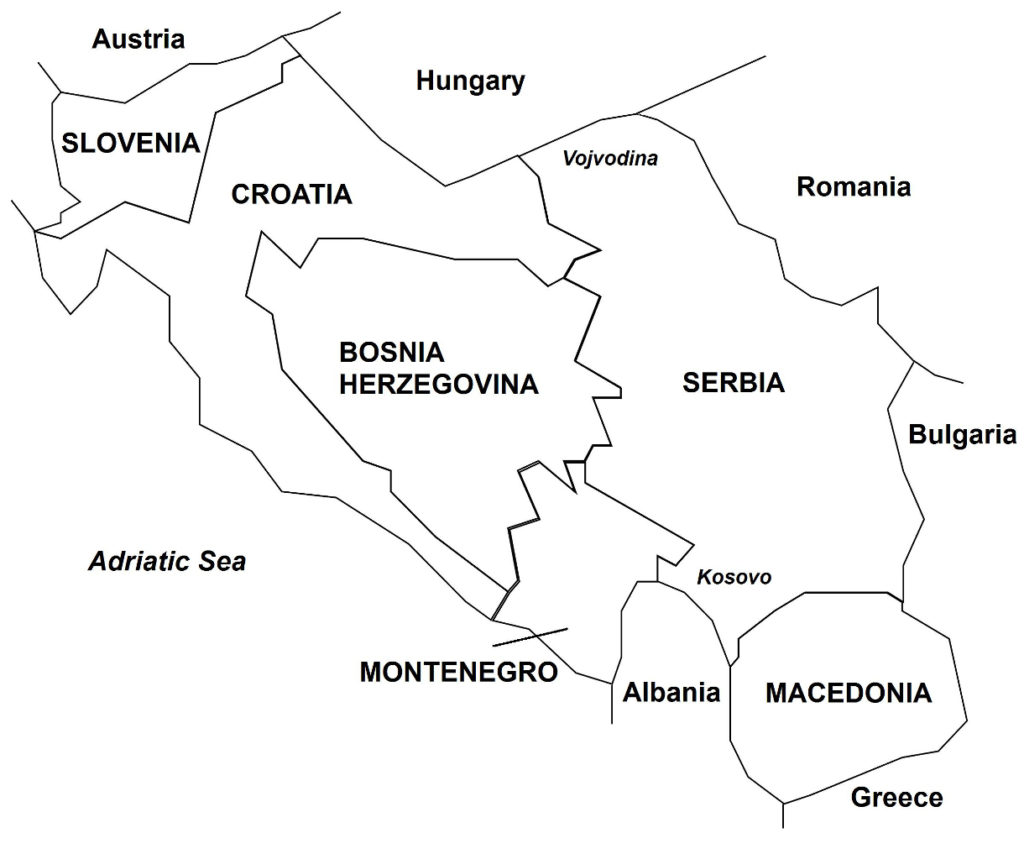On June 12, 1999, a NATO-led United Nations peacekeeping force (called KFor for Kosovo Force) entered war-torn Kosovo. KFor was tasked by the UN Security Council to maintain the peace as a result of the Kosovo War. By this time, Kosovo was facing a serious humanitarian crisis, with nearly one million civilians displaced by the fighting.
The Kosovo War (February 1998-June 1999) was fought between the Yugoslav Army and Albanian Serb militias against the Kosovo Liberation Army (KLA), a Kosovo Albanian rebel group. Subsequently, the KLA would gain air support from NATO and ground support from the Albanian Army.

At the outbreak of the war, Kosovo was an autonomous region of Serbia. It had two main ethnic groups: the majority Albanians (comprising 77% of the population) who desired greater autonomy from Serbia, and Kosovo Serbs (15% of the population) who wanted more political integration with Serbia.
War In April 1996, the KLA, an extremist Albanian militia that sought to gain Kosovo’s independence by force, launched attacks against Serbian police units across Kosovo. By March 1998, as the KLA had grown in strength and were intensifying its armed operations, the Yugoslav Army entered Kosovo. Fighting occurred from March to September 1998, concentrated mostly in central-south Kosovo. The Yugoslav Army was far superior in strength, forcing the KLA to resort to guerilla warfare, such as ambushing army and security patrols, and raiding isolated military outposts. Through a tactical war of attrition, the KLA gained control of Decani, Malisevo, Orahovac, Drenica Valley, and northwest Pristina.
In September 1998, the Yugoslav Army and Kosovo Serb forces launched offensive operations in northern and central Kosovo, driving away the KLA from many areas. These offensives also turned 200,000 civilians into refugees, prompting the United Nations to call for a ceasefire and an end to the conflict.
With the North Atlantic Treaty Organization (NATO) threatening to intervene, Yugoslavia agreed to a ceasefire in October 1998. A multi-national observer team then arrived in Kosovo to monitor the ceasefire. Fighting broke out in December 1998, however, which escalated in intensity early the next year, forcing the multi-national observer team to leave Kosovo in March 1999.
NATO became increasingly involved in the war – especially after the discovery of the bodies of 45 executed Kosovo Albanian farmers – and decided that direct military intervention was needed to end the war. In March 1999, NATO presented to Yugoslavia a proposal to station 30,000 NATO soldiers in Kosovo to monitor and maintain peace. Furthermore, the NATO force was to have free, unrestricted passage across Yugoslavia. The Yugoslav government vehemently rejected the UN proposal, calling it a violation of Yugoslavia’s territorial sovereignty. In turn, Yugoslavia offered its own peace proposal, which was also rejected by NATO. The diplomatic impasse prompted NATO to begin military action against Yugoslavia.
On March 23, 1999, using over one thousand planes, NATO began launching massive air strikes against military installations and facilities in Yugoslavia. Later, NATO targeted Yugoslav Army units as well. NATO planes also attacked public infrastructures such as roads, railways, bridges, telecommunications systems, power stations, schools, and hospitals. Many unintended targets were hit as well, such as a convoy of Kosovo Albanian refugees, a Kosovo prison, a Serbian television facility, and the Chinese Embassy in Belgrade. The NATO air attacks against non-military targets drew widespread international condemnation.
In retaliation for the air strikes, the Yugoslav Army and Kosovo Serb forces expelled Kosovo Albanians from their homes. Within a few weeks, some 750,000 Kosovo Albanians had been forced to flee to neighboring Albania, Macedonia, and Montenegro.
On June 3, the government of Yugoslavia, persuaded by Russia, yielded to strong international pressure and agreed to accept NATO’s peace proposal. Thereafter, Yugoslav forces withdrew from Kosovo. NATO then ended its air strikes against Yugoslavia and sent a peacekeeping force, under a UN mandate, to enter Kosovo. Russia, which was Yugoslavia’s staunchest supporter during the war, also deployed its own peacekeepers in Kosovo to serve as a foil against the NATO troops. NATO and Russian peacekeepers coordinated their actions, however, to secure peace in Kosovo while avoiding unwanted confrontations between them.
About 13,000 persons died in the Kosovo War. Over one million civilians fled the fighting and became refuges, although most eventually returned to their homes after the war. Perhaps as many as 200,000 ethnic Serbs fled Kosovo in the years after the war. Yugoslavian and Kosovo Serbian political and military leaders, including KLA members, have been charged with war crimes.
In February 2008, Kosovo Albanians declared Kosovo an independent country. Serbia rejected Kosovo’s independence and has since maintained its claim to Kosovo as being an integral part of Serbian territory. While the United States, United Kingdom, and other countries recognize Kosovo’s independence, many others do not. Russia, in particular, insists that any proposed solution must be acceptable to both Serbia and Kosovo. (Excerpts taken from Wars of the 20th Century: Volume 1.)
